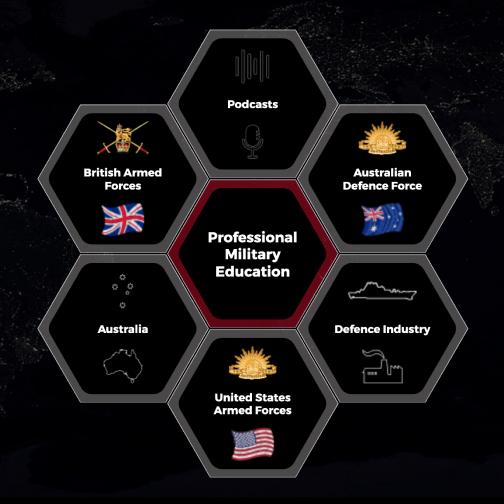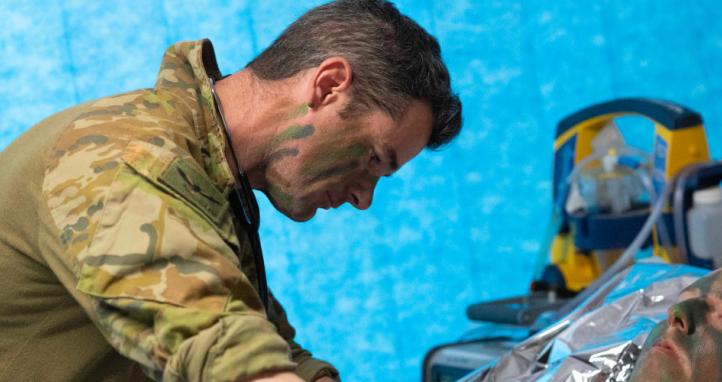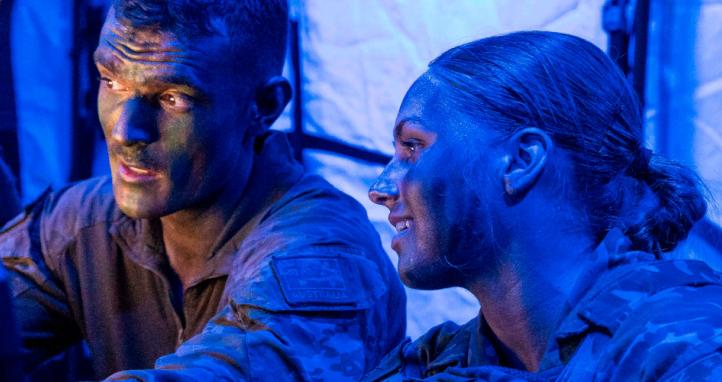From a historical perspective, the use of combat tourniquets for battlefield trauma is surprisingly controversial. Only relatively recently has a favourable opinion returned in support of pre-hospital limb tourniquet application, because of the positive clinical outcomes documented during the Global War on Terror. Within counterinsurgency operations, as part of an overarching framework of Tactical Combat Casualty Care (TCCC), tourniquet use has been unequivocally proven as highly effective and safe.
Combat tourniquet application now represents arguably the single most important medical innovation in recent history for the reduction of avoidable battlefield death. Accordingly, the early aggressive use of combat tourniquets is a cornerstone feature of effective TCCC for the management of penetrating limb trauma. From a broader perspective, the favourable results of combat tourniquet use in counterinsurgency operations have driven the worldwide universal acceptance and implementation of pre-hospital tourniquet application across multiple organisations.
It is important to recognise, however, that the favourable results associated with combat tourniquets and the organisational protocols that have subsequently developed surrounding their management remain underwritten by the assumption of universal rapid casualty evacuation to higher-level care.
However, observations throughout the current Russo-Ukrainian War have exposed significant limitations in TCCC tourniquet protocols when applied to battlefields other than counterinsurgency. Several problems exist with current tourniquet procedures when applied to near-peer Large Scale Combat Operations (LSCO). The first relates to contested mobility and delayed casualty evacuation.
2-30-1 metrics (2 minutes to initial TCCC provision, 30 minutes to delivery of advanced resuscitation, and 1 hour to damage control surgery) are simply not achievable when fighting a technologically advanced enemy armed with integrated modern weapon systems. An uncomfortable truth that the ADF has not before needed to answer coherently is how to reconcile Prolonged Field Care (PFC) with tourniquet ischaemia at a large scale.
The second challenge relates to the delivery of point of injury care and “last mile logistics” onto target, within a battlespace dominated by mobility denial. The changing threat and countermeasure landscapes, combined with the inherent vulnerability of health assets, significantly constrain the delivery of specialised health care provider trauma management to soldiers trapped within the forward battlespace.
The documented outcomes associated with limb tourniquet use in Ukraine are devastatingly clear. Avoidable limb amputations and unnecessary loss of life have been sustained at an extraordinary scale as a direct consequence of combat tourniquets. Similarly, ADF tourniquet protocols, whilst highly suited for counterinsurgency, are unfit for purpose within various projected future operational environments. Whilst the ADF acknowledges tourniquet conversion and replacement techniques, training is insufficient in scope and penetration throughout the organisation. If the ADF were to deploy into LSCO today, the avoidable loss of extremities and life for Australian soldiers from combat tourniquets is certain.
To be clear, the central issue with ischaemic injury from tourniquet application is not the device itself. Overwhelming data supports the use of combat tourniquet application as a critical foundation for the prevention of battlefield death. The problem is neither primarily one of mobility denial. Mobility denial simply exposes the assumptions upon which our TCCC tourniquet protocols have been built.
Helicopters neither apply nor de-escalate tourniquets. The solution to tourniquet ischemia in PFC is to develop increased depth within our tourniquet management procedures to address the requirements of future warfare. The ADF therefore needs to create a robust organisational framework to mitigate the risks associated with tourniquet use without reliance upon air superiority, uncontested mobility, or advanced health care providers ubiquitously available within the forward battlespace.
Within Australia’s current strategic environment, the absence of mature combat tourniquet mitigation capabilities represents a high-consequence health care vulnerability. Our coalition partners have likewise echoed these concerns.
From an organisational perspective, how can the risks associated with combat tourniquet application in LSCO be mitigated? Two broad strategies could be employed, both of which have merit and their advocates.
The first strategy is to reduce the overall number of combat tourniquets applied by adopting a policy of restricted tourniquet application. The rationale of a restrictive policy is supported by the observations that many tourniquets placed in combat (typically greater than 50%) are medically unnecessary. If fewer combat tourniquets were applied, by selecting only those casualties presenting with high flow rate limb haemorrhage from penetrating trauma, then the number of limbs at risk of sustaining tourniquet injury would be proportionately reduced.
The second strategy is to enable forward tourniquet de-escalation after initial application. A policy of forward de-escalation accepts the relatively liberal initial application of combat tourniquets, offset by the subsequent removal of those deemed medically unnecessary using a tourniquet conversion-replacement drill.
Of course, the policies of restricted application and forward de-escalation are not mutually exclusive. In principle, both policies could be applied simultaneously. However, the nature of casualty care in a combat environment strongly favours an organisational policy preferentially biased towards liberalised forward tourniquet de-escalation.
In comparison to most civilian trauma, military combat trauma is associated with an ongoing threat profile after initial wounding. Continued enemy action, or the threat of ongoing attack, places a combat casualty and those providing security and immediate health care at enduring risk. These principles thus shape our current Care Under Fire (CUF) protocols used within TCCC. However, even after transitioning to the Tactical Field Care (TFC) phase, an ongoing threat profile still exists, time is short, and combat teams are task saturated. Accurate wound evaluation within these constraints is difficult to achieve and comes at a tactical cost.
Delaying tourniquet application until after comprehensive wound assessment, however, represents a risk to those casualties with high flow rate haemorrhage masked by clothing, poor light conditions, or tactical movement. Compounding this, combat injuries resulting from high-explosive blast or high kinetic energy projectiles may be associated with more severe wounding profiles. Poly trauma may result in cumulative blood loss from multiple body regions, and wound assessment may be inaccurate due to cavitation and projectile fragmentation.
Immediate Action (IA) tourniquets in combat environments may therefore be reasonably applied for two reasons – medical requirement, or tactical necessity. When faced with penetrating limb trauma in an active combat environment, if there are reasonable grounds to believe that a severe injury has been sustained, then place a tourniquet. This is the unambiguous narrative we must continue to provide and back our soldiers with. To promote a policy of restrictive tourniquet application in TCCC introduces elements of uncertainty and complexity. Whilst it is acknowledged that tourniquets do not need to be applied for minor injuries, if a soldier is concerned about the risk of catastrophic haemorrhage, they must be fully supported in their decision to apply a limb tourniquet.
It follows, therefore, that if the ADF is going to maintain our current policy of relatively liberal tourniquet use within operational environments other than counterinsurgency, then enhanced forward de-escalation capabilities are required. When applied to LSCO, tourniquet de-escalation capability must be ubiquitously available throughout the battlespace to counterbalance the impacts of mobility denial and prolonged duration casualty evacuation. To achieve this standard, coordinated fundamental tourniquet de-escalation skills are required within the forward battlespace, at least to the level of all Combat First Aid (CFA) providers, but arguably even to the level of the individual soldier.
The ADF requires comprehensive tourniquet de-escalation capabilities at scale in preparation for various future combat environments. A cornerstone feature of this capability is a policy of liberalised forward de-escalation to reduce the risk of tourniquet injuries in LSCO.










Great insights.
Bridging the gap between training in peace time and skill application during combat is made even more challenging due to the evolving nature of warfare. Tourniquet management is a good example. Whereas TQ application has proven successful in counterinsurgency operations, the same protocols applied to LSCO have revealed significant limitations. Your commentary about knowledge base expansion to enable critical thinking and flexibility in combat first aid delivery is spot on.
Thanks for the input.
Hopefully these can assist you in the near term:
1. https://cove.army.gov.au/article/tourniquet-de-escalation-framework-australian-defence-force
2. https://cove.army.gov.au/article/fundamental-tourniquet-de-escalation-comprehensive-guide
3. https://cove.army.gov.au/article/advanced-tourniquet-de-escalation-comprehensive-guide
ADF endorsed training versions in evolution.
Patrick.